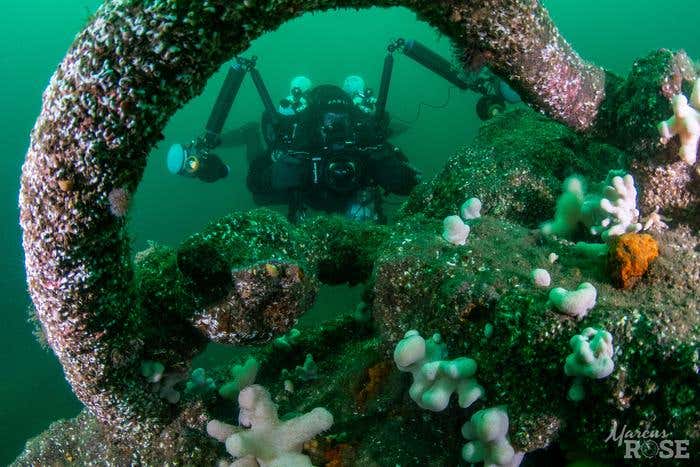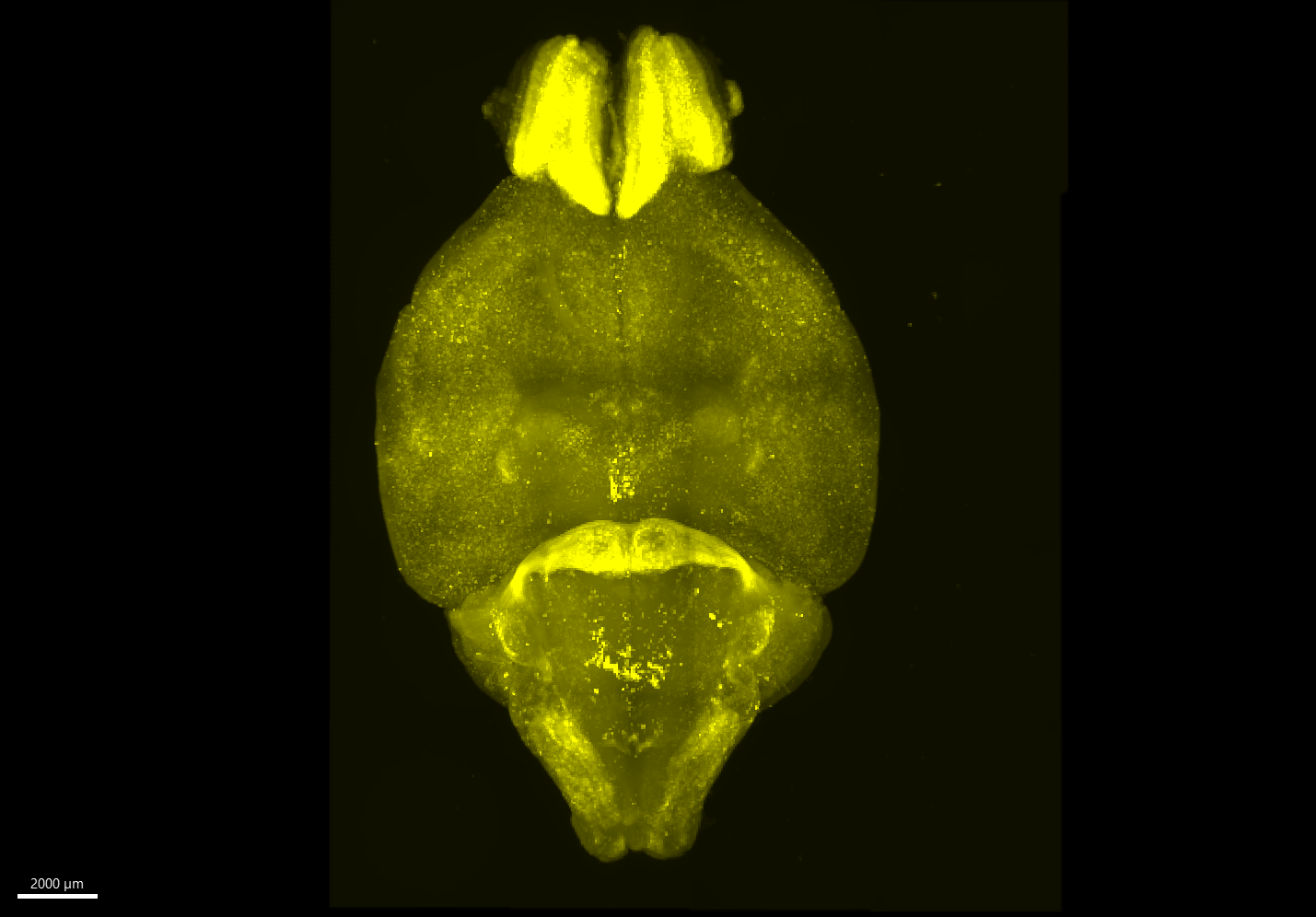Shipwrecks have become covert sanctuaries for marine life, study finds
An estimated 50,000 shipwrecks scattered around the UK’s shores have emerged as covert sanctuaries for various marine species.

[Nov. 25, 2023: JD Shavit, The Brighter Side of News]
A diver examines a wreck off the Berwickshire coast and captures data that were subsequently used to better understand the biodiversity which can be found on shipwrecks. (CREDIT: marcusrose.gue)
The United Kingdom's coastline, steeped in maritime history, harbors an unexpected treasure trove beneath its waves – shipwrecks. A recent study, conducted by the University of Plymouth and the Blue Marine Foundation, has unveiled the remarkable ecological significance of these submerged relics.
According to the findings, an estimated 50,000 shipwrecks scattered around the UK's shores have emerged as covert sanctuaries for various marine species, shielding them from the ravages of destructive bottom towed fishing practices. This revelation underscores the importance of preserving these historical wrecks and the surrounding areas for the sake of marine biodiversity and conservation efforts.
These shipwrecks, many of which have rested on the seabed for well over a century, have inadvertently acted as barriers to fishers employing bottom towed trawling methods. While significant portions of the seabed in heavily fished areas have suffered considerable damage, the areas surrounding shipwrecks remain remarkably untouched.
The research, published in the journal Marine Ecology, sheds light on the enhanced ecological importance of shipwrecks and their adjacent environments, especially in regions where fishing pressure is intense.
Related Stories
Lead author of the study, Jenny Hickman, who completed the research as part of her MSc Marine Conservation program at the University of Plymouth, emphasized the historical context of bottom towed fishing gear, which has been in use since the 1800s. She explained, "Outside of legal protection, only areas inaccessible to trawlers are offered any protection, which is why shipwreck sites are rarely subject to trawling pressure. As many have been in situ for more than 100 years, they offer a baseline of ecological potential when trawling pressure is reduced or removed."
The research focused on five shipwrecks off the Berwickshire coast, which are believed to have sunk in the late 19th and early 20th centuries. These wrecks, composed of various materials, are located at depths ranging from 17 to 47 meters beneath the ocean surface. Some of them are situated in areas open to bottom towed fishing, while others are in zones with restrictions on certain types of fishing.
There are an estimated 50,000 shipwrecks around the UK’s coastline and they serve as a deterrent to fishers who use bottom towed trawling to secure their catches. (CREDIT: marcusrose.gue)
To gather critical data, the research teams, with the assistance of local boat crews, conducted underwater surveys and captured video footage of the shipwrecks, the surrounding 50-meter radius, and control locations more than 150 meters from the wreck sites. The footage was subsequently analyzed to identify vulnerable species that could be at risk from trawling activities.
Joe Richards, Scotland Project Manager for the Blue Marine Foundation and co-author of the study, commented on the significance of these findings, saying, "It has long been thought that shipwrecks could be playing an important role in providing sanctuary for marine species to utilize. It is brilliant to see this proven in this study. The research provides insight into what might be possible if bottom towed fishing activity is reduced. This feeds into our wider understanding of shipwrecks' potential to contribute to ecosystem recovery and enhancement, given the sheer number found on the seabed."
New research found that the average density of marine life in areas still open to trawling was 240% greater within wreck sites than in sites actively being used for bottom towed fishing. (CREDIT: richwalkergue)
The collaboration between the University of Plymouth and the Blue Marine Foundation has spanned several years, with a focus on studying the benefits of Marine Protected Areas (MPAs). The results of previous research in the Lyme Bay MPA, located off the South Coast of England, have provided a foundation for the UK Government's current approach to MPA management.
The recent study not only underscores the importance of considering wreck sites in future conservation plans but also highlights the advantages of granting Marine Protected Areas (MPAs) status to these historically significant areas.
The Scottish section of the Berwickshire and Northumberland SAC, with locations of management designations and shipwrecks surveyed. (CREDIT: Marine Ecology)
Dr. Emma Sheehan, Associate Professor of Marine Ecology and senior author of the study, noted, "In recent years, the UK has made significant strides in terms of measures to protect the marine environment. There is still much to be done to reach the goal of having 30% of the ocean protected by 2030, but if we are to get close to that, we need detailed evidence about what makes our ocean so special and any existing initiatives that are working well. This study builds on our existing work in that regard and highlights an impact of past human activity that is actually having a positive impact on the seabed today. It is unquestionably something that should be factored into future marine management plans."
The underwater world of the UK's shipwrecks is a testament to the intricate relationship between history and ecology. These sunken relics, remnants of past maritime disasters, are now invaluable havens for marine life, serving as vital sanctuaries in a world threatened by destructive fishing practices. As we navigate the path toward ocean conservation, it is clear that recognizing and preserving these hidden ecological gems is not only a tribute to our maritime heritage but also a commitment to safeguarding the delicate balance of life beneath the waves.
For more environmental good news stories check out our Green Impact section at The Brighter Side of News.
Note: Materials provided above by The Brighter Side of News. Content may be edited for style and length.
Like these kind of feel good stories? Get the Brighter Side of News' newsletter.



